

| Instruments | Discriptions |
|---|---|
 |
Make- Teledyne leemal labs Model No :- PRODIGY XP Application -ICP Optical Emission Spectrometry Principle. ICP,abbreviation for Inductively Coupled Plasma, is one method of optical emission spectrometry. When plasmaenergy is given to an analysis sample from outside, the component elements (atoms) are excited. |
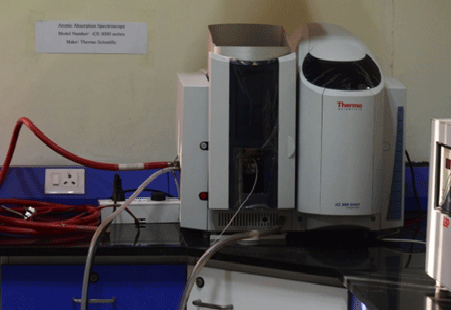 |
Make- Thermo scientific Model No :- ICE-3000 Application he basic principle of atomic absorption spectrophotometry states that atoms absorb specific wavelengths of electromagnetic radiation. Spectrophotometry is a technique used in measuring the quantity of light absorbed by a substance by determining the intensity of light transmitted by a chemical solution. |
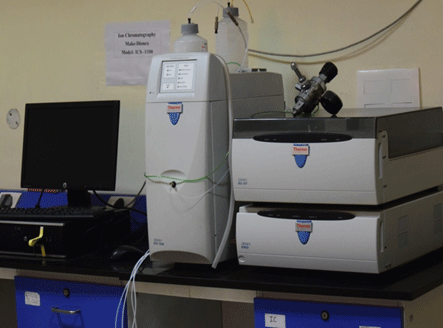 |
Make- Dionex Model No :- ICS -1100 Application Ion chromatography (or ion-exchange chromatography) is a chromatography process that separates ions and polar molecules based on their affinity to the ion exchanger. It works on almost any kind of charged molecule—including large proteins, small nucleotides, and amino acids. It is often used in protein purification, water analysis, and quality control.[citation needed] The water-soluble and charged molecules such as proteins, amino acids, and peptides bind to moieties which are oppositely charged by forming ionic bonds to the insoluble stationary phase. |
 |
Make- Bio-Red Model No :- S1000 Application A thermal cycler (also called thermocycler) is an instrument that employs precise temperature control and rapid temperature changes to conduct the polymerase chain reaction (PCR). PCR is used to create billions of copies of a DNA sequence for use in a wide array of downstream procedures including cloning, sequencing, expression analysis, and genotyping. |
 |
Gel-Doc EZ Imager Make- Bio-Red Application A thermal cycler (also called thermocycler) is an instrument that employs precise temperature control and rapid temperature changes to conduct the polymerase chain reaction (PCR). PCR is used to create billions of copies of a DNA sequence for use in a wide array of downstream procedures including cloning, sequencing, expression analysis, and genotyping. |
| Instruments | Discriptions |
|---|---|
 |
Plotter Make -Canon Model No :- IPF8000S Application The Canon imagePROGRAF iPF8000, 44" inch printer takes the next step in redefining large format printing. The new iPF8000 is the ideal solution for any color professional looking for impressive, full-bleed color output, strength in paper handling and exceptional speed in output. Advanced professional features such as automatic clogged nozzle detection and compensation for reliability, 330ml and 700ml selectable ink capacity sizes for versatility, a large backlit LCD panel for ease of use. |
 |
Application The GIS Remote Sensing Laboratory of SENR is equipped with 20 computers,four work Stations,Plotter and Scanner.Ten licenses of ERDAS imaging and five licenses of Arclnfo have been procured for the GIS and RS Laboratory. |
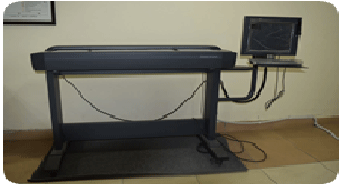 |
Design Jet Scanner Model No :- 4520 Application Streamline workflow and improve productivity by bringing large-format, color scanning Make- HP |
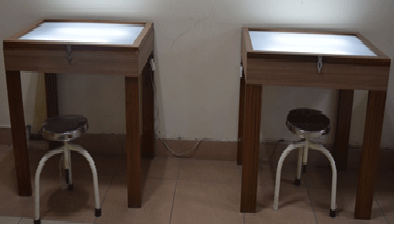 |
Drafting table Application Staples provides a wide range of drawing & drafting tables for specialty applications. A drafting table or desk provides a larger angled work surface, which is ideal for design and art applications as well as technical drawing. |
| Instruments | Discriptions |
|---|---|
 |
Make –Thermo Scientific Model No :- Serial No-E-0185 Application The Andersen Cascade Impactor (ACI) is arguably the most commonly used impactor within the pharmaceutical industry for the testing of inhaled products. The ACI is an 8-stage cascade impactor suitable for measuring the aerodynamic particle size distribution (APSD) of both MDIs and DPIs. |
 |
Make- Magee Scientific Model No :- AE33-7 Application he gas stream (frequently ambient air) passes through a filter material which traps the suspended particulates, creating a deposit of increasing density. A light beam projected through the deposit is attenuated by those particles which are absorbing (‘black’) rather than scattering (‘white’). Measurements are made at successive regular time intervals. The increase in attenuation from one measurement to the next is proportional to the increase in the density of optically absorbing material on the filter |
 |
Make- Spectro Model No :- SLE-RDS104NL Application Suspended Particles in the air are sampled at constant rate of 0.9 to 1.3 m3 /min through the inlet of cyclone. By virtue of their momentum, particles greater than 10 microns are carried vertically upwards by the air flow and collected on a filter paper of 8 x 10 inch. |
 |
Make- Thermofisher Application Environmental monitoring describes the processes and activities that need to take place to characterise and monitor the quality of the environment. Environmental monitoring is used in the preparation of environmental impact assessments, as well as in many circumstances in which human activities carry a risk of harmful effects on the natural environment. |
| Instruments | Discriptions |
|---|---|
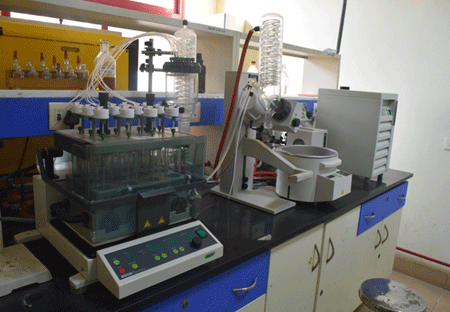 |
Make-Buchi Model No :- R-100 Application The rotary evaporator R-100 is a high-quality, entry level Rotavapor to meet the essential needs in classical laboratory applications. It is capable of a manually adjustable rotation speed of 20 to 280 rpm and equipped with an action jack lift for manual lifting of the evaporating flask. Included is the selected condenser, 1 L receiving and evaporating flasks, and a vapor duct. All accessories are included for out of the box usage |
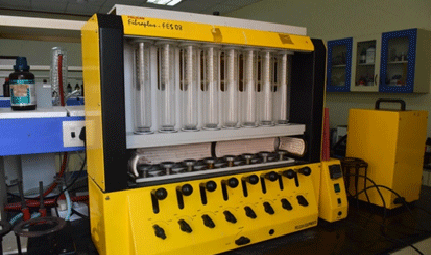 |
Make –Pelican Model No :- FES08 Application Vegetables and derived products are made up of substances belonging to different categories Carbohydrates, proteins, fats, mineral salts.A non-digestible component consisting of polymers (lignin, cellulose) |
 |
Make- Mars Model No :- ZRXQ003T0 Application Milli-Q is a trademark created by Millipore Corporation to describe 'ultrapure' water of "Type 1", as defined by various authorities (e.g. ISO 3696), as well as their devices for producing such water.[1] The purification processes involve successive steps of filtration and deionization to achieve a purity expediently characterised in terms of resistivity (typically 18.2 MΩ·cm at 25 °C). The term is also commonly used as a genericised trademark to refer to other purified waters and purification equipment. |
| Instruments | Discriptions |
|---|---|
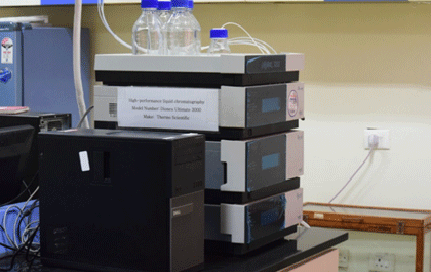 |
Make-Dionex Model No :- Ultimate 3000 Application Water purification.Preconcentration of trace components.Ligand-exchange chromatography.Ion-exchange chromatography of proteins.High-pH anion-exchange chromatography of carbohydrates and oligosaccharides. |
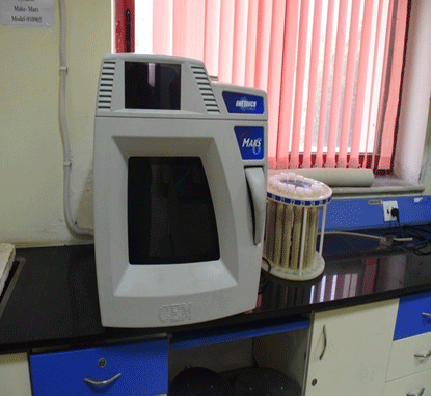 |
Make- MARS Model No :- 910905 Application A microwave digestion method in a closed vessel was developed for the simultaneous determination of trace and major elements, with the highest possible recoveries, in atmospheric aerosols using Inductively Coupled Plasma Mass Spectrometry (ICP-MS). This method was developed to quantify the concentration of Na, Mg, Al, P, K, Ca, Ti, V, Cr, Mn, Fe, Co, Ni, Cu, Zn, As, Se, Rb, Cd, Sb, Cs, Ba, La, Ce and Pb present in quartz filters containing particulate matter (PM10). |
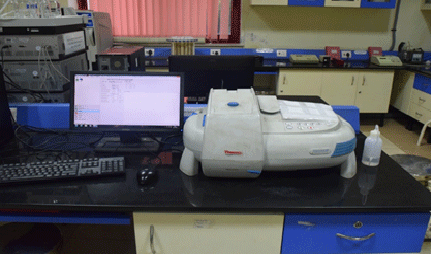 |
Make- Thermo Scientific Model No :- Evolution 201 Application Ultraviolet–visible spectroscopy or ultraviolet-visible spectrophotometry (UV-Vis orUV/Vis) refers to absorption spectroscopy or reflectance spectroscopy in the ultraviolet-visible spectral region. This means it uses light in the visible and adjacent (near-UV and near-infrared (NIR)) ranges |
 |
Make- Li- COR Model No :- Li -8100a Application Although there are other physical processes that play a role in soil respiration, CO2 movement or CO2 flux out of the soil is the primary function of soil respiration. Soil CO2 flux is a significant component of the total atmospheric carbon balance, and it is a very important variable in any study of global climate change. Soil respiration is also a strong indicator of the biological health and vigor of a soil and is an excellent tool to evaluate the efficacy of bioremediation efforts and the impact of changing agricultural practices. |
| Instruments | Discriptions |
|---|---|
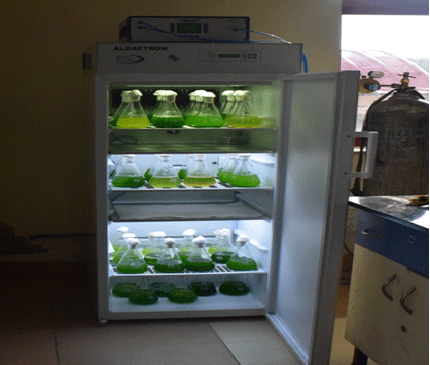 |
Make- Bio-Gentec Model No :- Ag-230-E60 Application |
 |
Make- Eppendorf Model No :- 5418R Application Centrifuges |
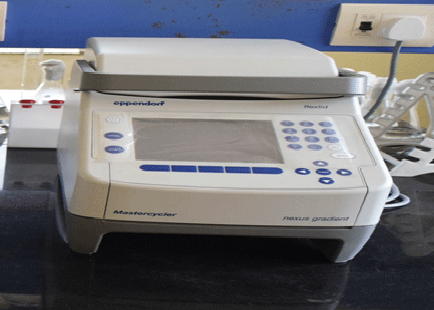 |
Make- Eppendorf Model No :- AG 22331 Application The thermal cycler (also known as a thermocycler, PCR machine or DNA amplifier) is a laboratory apparatus most commonly used to amplify segments of DNA via the polymerase chain reaction (PCR).[1] Thermal cyclers may also be used in laboratories to facilitate other temperature-sensitive reactions, including restriction enzyme digestion or rapid diagnostics.[2] The device has a thermal block with holes where tubes holding the reaction mixtures can be inserted. The cycler then raises and lowers the temperature of the block in discrete, pre-programmed steps. |
| Instruments | Discriptions |
|---|---|
 |
Make- Euro EA Model No :- EA-3000 Application Application- As the name implies, a CHN Analyzer is a scientific instrument which can determine the elemental concentrations in a given sample. It is used to measure Carbon (C), Hydrogen (H) and Nitrogen (N). Sample sizs may differ depending on system, but most often in around a few mg. For some sample matrices larger mass is preferred due to sample inhomogenicity. This instrument uses combustion to oxidize the sample into simple compounds which are then detected with thermal conductivity detection or infrared spectroscopy. Separation of interferences is done by chemical reagents. |
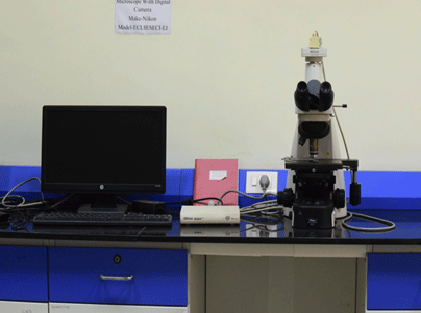 |
Make- Nikon Model No :- DS-Fi2 Application |
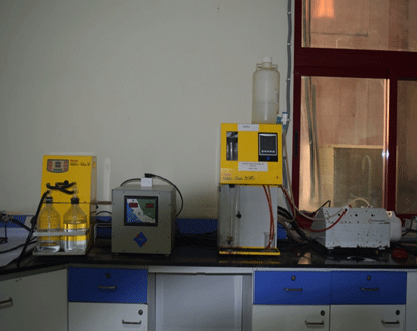 |
Make-Pelican Model No :- Kelvac Application itrogen is a necessary component of all living things. Amino acids are the building blocks of proteins. When Amino acid was discovered it was found that each amino acid contained Nitrogen. Fertilizers which have Ammonia and Urea as key components are found to contain Nitrogen. Nitrogen components like TNT, Nitrocellulose etc. are key compounds in Explosives. Heterocyclic Nitrogen Compounds are important in production of Plastic, Rubber and Paint. The purity of water is evaluated in knowing the Nitrogen content of water. Nitrogen has proved to be an excellent indicator. |
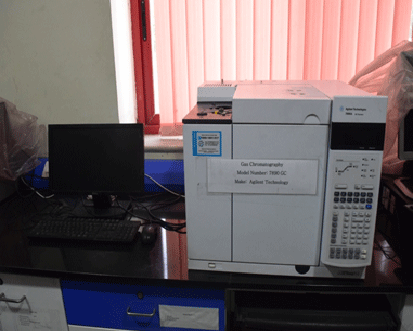 |
Make- Agilent Model No :- 7890 Application The principle in gas chromatography principle involves separation of components of the sample under test due to partition in between gaseous mobile phase and stationary liquid phase. The components partitioned into gas come out first while other come later.Gas chromatography runs on the principle of partition chromatography for separation of components. In terms of stationary and mobile phases it is categorized under gas-liquid type of chromatography i.e stationary phase is a liquid layer supported over a stationary phase while the mobile phase is an inert and stable gas. Hence the perfect name as Gas Liquid chromatography (GLC). |
 |
Make-Agilent Model No :- 7980 – 5975C Application The Gas Chromatography/Mass Spectrometry (GC/MS) instrument separates chemical mixtures (the GC component) and identifies the components at a molecular level (the MS component). It is one of the most accurate tools for analyzing environmental samples. The GC works on the principle that a mixture will separate into individual substances when heated. The heated gases are carried through a column with an inert gas (such as helium). As the separated substances emerge from the column opening, they flow into the MS. Mass spectrometry identifies compounds by the mass of the analyte molecule. A ÒlibraryÓ of known mass spectra, covering several thousand compounds, is stored on a computer. Mass spectrometry is considered the only definitive analytical detector. |
| Instruments | Discriptions |
|---|---|
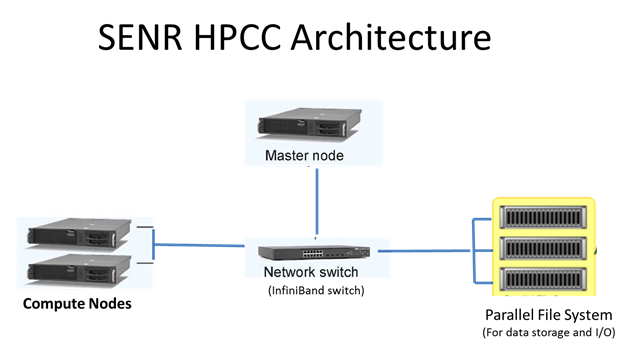 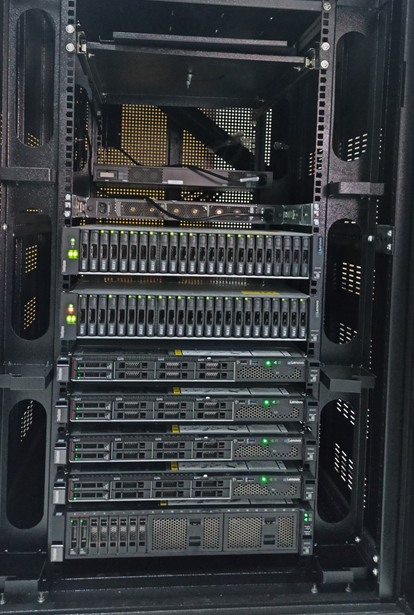 |
A High Performance Computing Cluster (HPCC) facility is available at SENR for running Climate Models, Chemical Transport Models (CTMs), and Weather-air quality models (NWPs). Currently, HPCC consists of a master node [Intel® Xeon® Gold 5118 CPU @ 2.3 GHz with 96 GB (8GB TruDDR4 2666 MHz RDIMM) memory], 2 computing nodes [Intel® Xeon® Gold 6126 CPU @ 2.6 GHz with 96 GB (8GB TruDDR4 2666 MHz RDIMM) memory] with a total of 48 cores and a data storage system of parallel file systems (PFS) of 50 TB (with processor 2xIntet®Xeon®Silver 4110 CPU@2.1GH) and a 1x24 InfiniBand network switch. The peak performance of HPC is ~ 3 Tflops. The systems are of Lenovo make ThinkSystem SR650 (master node), ThinkSystem SR630 (compute nodes), ThinkSystem SR650 DE4000H (PFS). The HPC has been established through generous funding from SERB and UGC grants. |